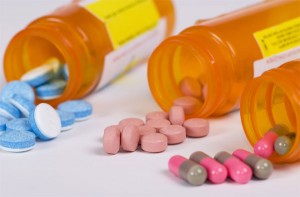 Iran's pharmaceutical market was worth $3.51 billion in 2012, and is expected to grow at an annual average rate of 13% to 2014, after which market growth will steady at 8%, say new forecasts.
Iran's pharmaceutical market was worth $3.51 billion in 2012, and is expected to grow at an annual average rate of 13% to 2014, after which market growth will steady at 8%, say new forecasts.
Expenditure on pharmaceuticals is expected to reach $4.14 billon by 2019 with a compound annual growth rate (CAGR) of 11%, taking inflation into account, says the study, from Frost & Sullivan.
Iran produces 90% of its medicines and the Ministry of Health has an ambitious goal of self-sufficiency within four years. Local production is mainly focused on generic drugs, which are produced by more than 70 Iranian drugmakers.
However, Iran's shortage of specialised medicine has opened the doors to Indian and Chinese products. "These lack quality and usually present side-effects, highlighting the market need for high volumes of specialised medicine, preferably of European and American origin," notes Frost & Sullivan healthcare analyst Uldouz Berenjforoush. "The country is expected to turn towards high volumes of foreign imports of high-quality medicines for now."
Iran's healthcare industry overall was worth $26.44 billion in 2011, and grew 6.4% to $28.13 billion in 2012. Currently, Iranians' healthcare out-of-pocket expenditure is 55% - very high compared to neighbouring countries, the report points out.
Cardiovascular diseases account for 45% of deaths, 18% are due to road accidents, 14% to cancer (particularly lung cancer) which is expected to increase to 18% by 2020, and 6% to neonatal and respiratory diseases. Diabetes, osteoporosis and nutritional and psychological disorders are also in the rise.
Medical tourism is flourishing in Iran, which offers quality expertise at lower costs. In 2012 alone, over 200,000 health tourists visited, bringing in over $1.5 billon. And in first-half 2013 over 85,670 medical tourists came, mainly for transplant, ophthalmology, orthopaedic and dentistry services.
Meantime, earlier this month Iranian government officials announced that 12 medicines - including nine anti-cancer drugs - that had previously been imported were now being produced domestically. Imports of the cancer drugs had been costing the country more than $80 million, but around $800,000-worth of research spending had enabled their production by domestic firms, say local reports.
It is also reported this month that Iran has increased the official US dollar exchange rate for medicine imports from 12,260 rials to about 24,000 rials. As a result, the prices of imported foreign-made drugs have risen 90%, while domestically-made products using imported raw materials have increased 40%.
By Pharma Times
The Iran Project is not responsible for the content of quoted articles.

 QR code
QR code